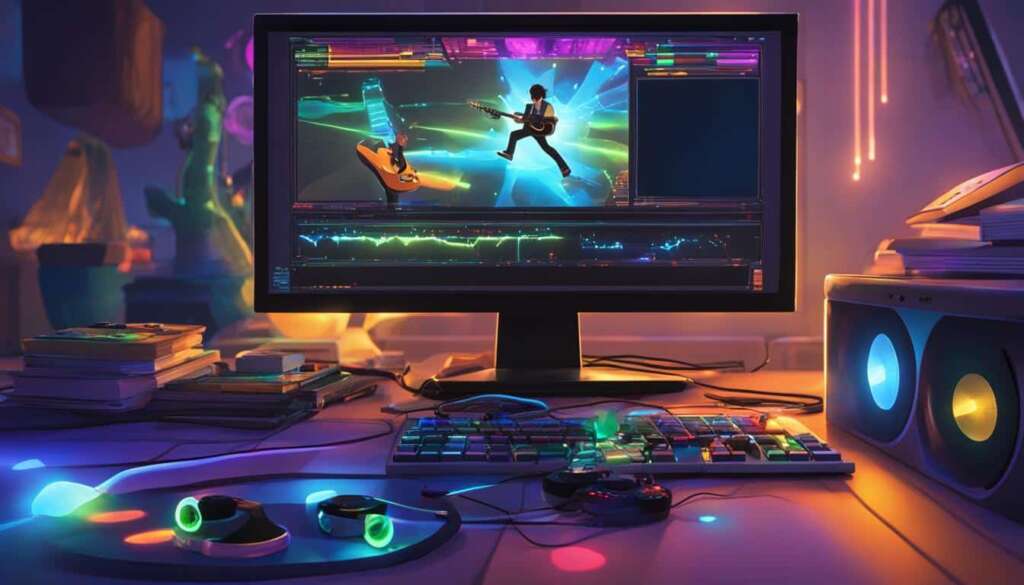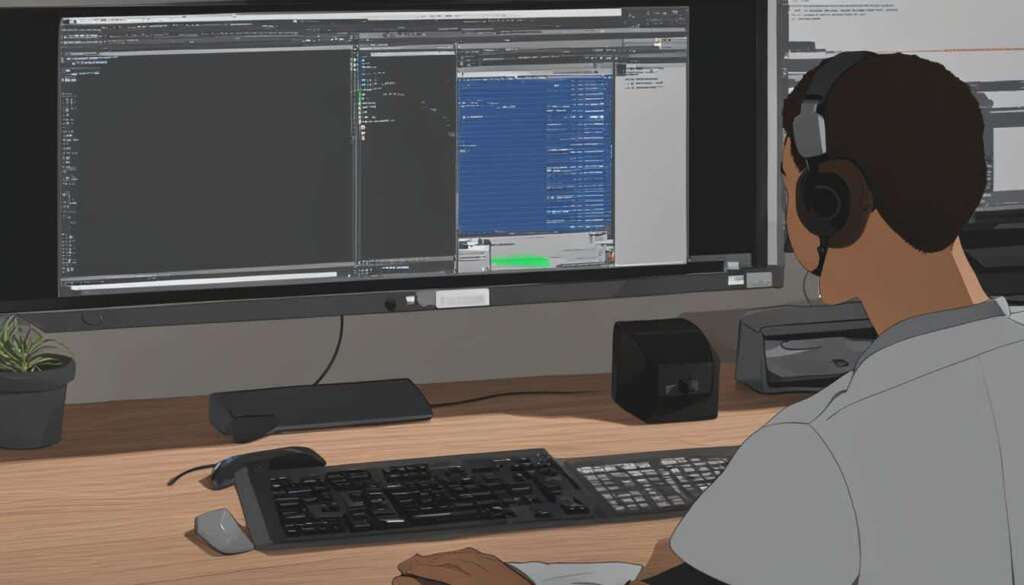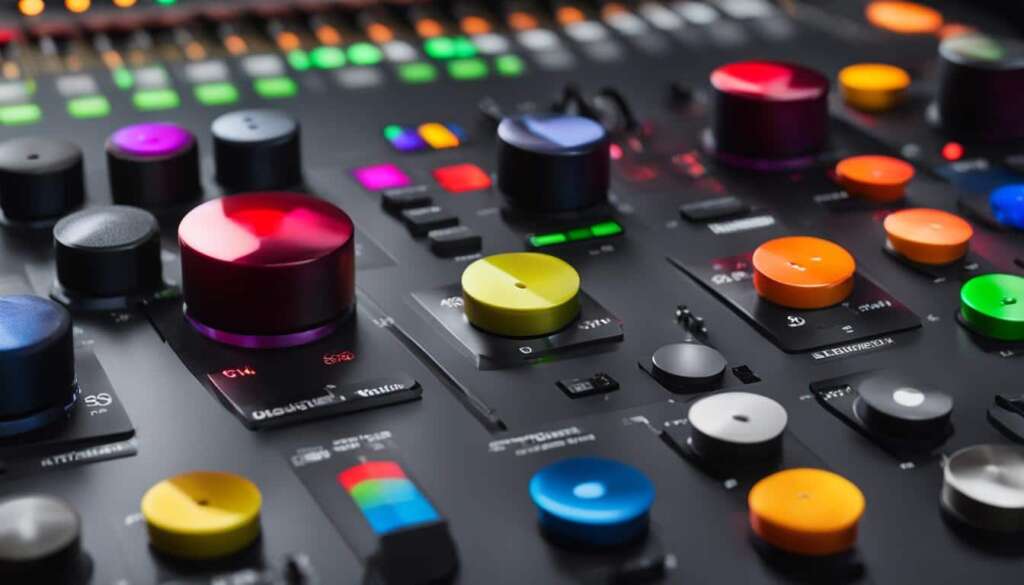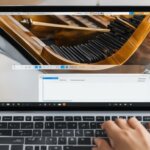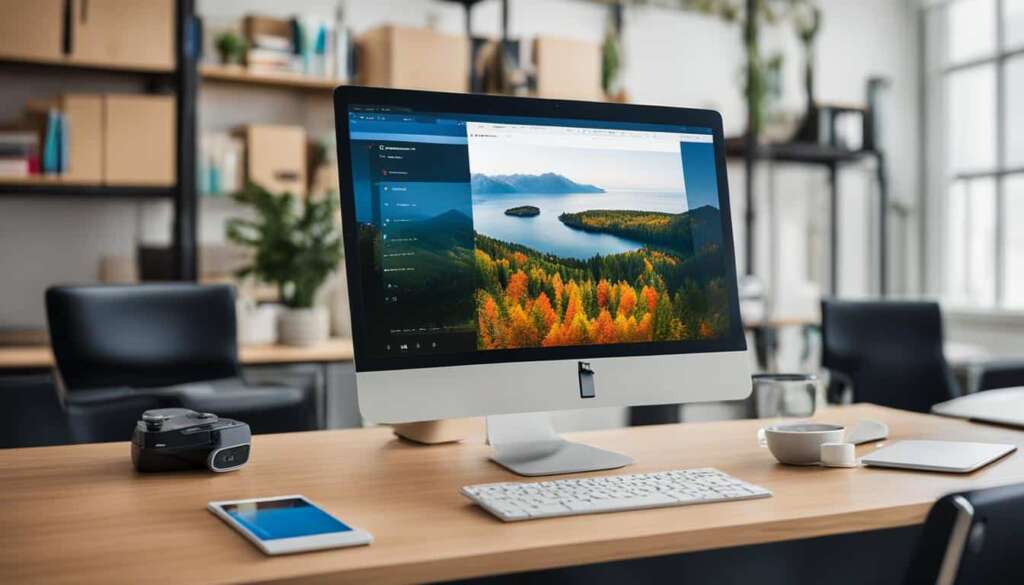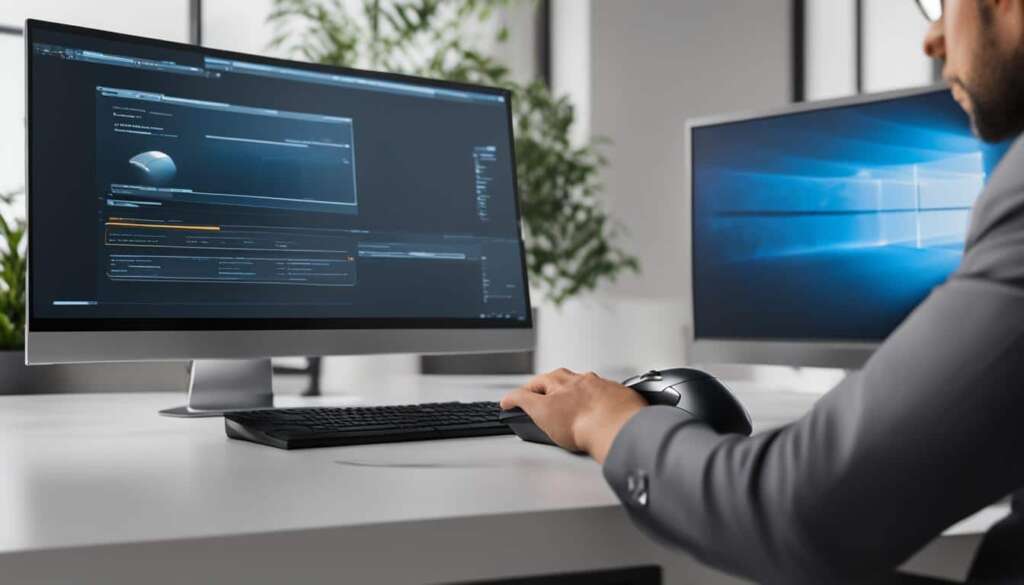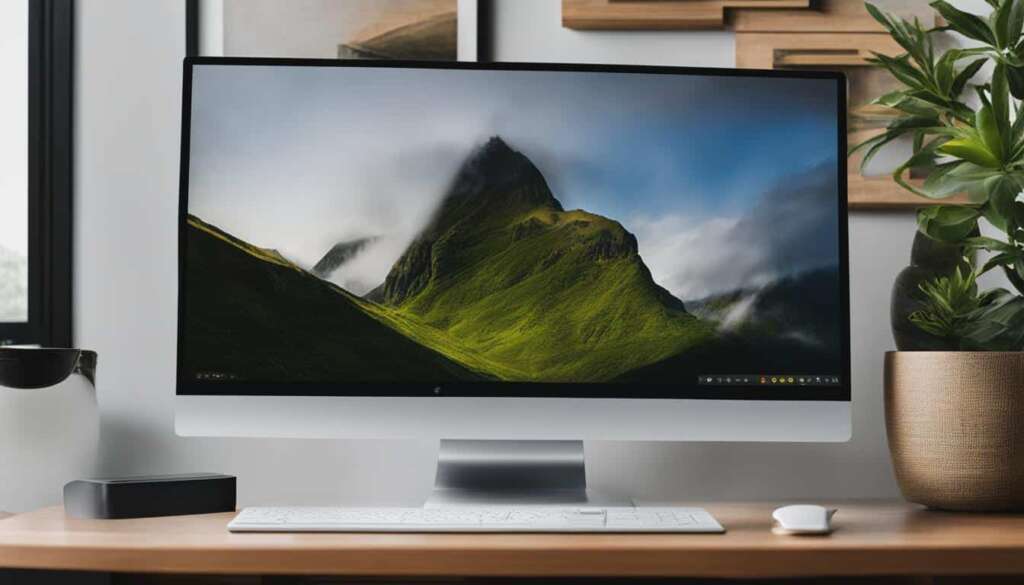Table of Contents
Welcome to our step-by-step guide on how to record guitar on your PC. Whether you’re a budding musician or a seasoned player, recording your guitar can open up a whole new world of possibilities. By harnessing the power of your computer and some essential equipment, you can capture your musical ideas with ease and precision.
In this guide, we’ll walk you through the process, from setting up your equipment to exploring different recording techniques. Whether you want to record acoustic, electric, or bass guitar, we’ve got you covered.
To begin, let’s take a look at the basic equipment you’ll need:
- Your computer
- A DAW (digital audio workstation) to record in
- An audio interface
- Cables and stands
- A pair of headphones
- Your guitar
- A guitar amplifier (optional)
- Microphones (optional)
- An amp simulator (optional)
It’s important to set up your DAW and audio interface correctly to ensure optimal recording quality. Depending on your preference, you can choose to record your guitar using a microphone and amp or by plugging directly into your interface. Experimenting with different mic placements will allow you to achieve the desired sound.
Additionally, for recording electric and bass guitars, you can explore amp simulators and DI (direct input) methods. When recording acoustic guitar, a condenser microphone and careful mic placement will help you capture the desired frequency balance.
Throughout this guide, we’ll provide detailed insights and tips to help you navigate the recording process smoothly. So, grab your guitar, connect it to your PC, and let’s dive into the world of guitar recording!
Essential Gear for Recording Guitar
When it comes to recording guitar, having the right gear is essential. Whether you’re a professional musician or a hobbyist, investing in high-quality equipment will greatly impact the sound and overall recording experience. Here are some key pieces of gear that every guitarist should consider:
Condenser Microphones
https://www.youtube.com/watch?v=3dN3szBk5SQ
A good condenser microphone is crucial for capturing the nuances and details of your guitar playing. These microphones are highly sensitive and excel at reproducing the natural tone and dynamics of acoustic and electric guitars. Consider using large-diaphragm condenser mics for recording acoustic guitar and dynamic or bass mics for bass guitar recording.
Audio Interface
An audio interface acts as the bridge between your guitar and computer, allowing you to record high-quality audio directly into your DAW (digital audio workstation). Look for an audio interface with good preamps to ensure optimal sound quality. It is recommended to choose an interface with multiple inputs, as it allows you to record multiple sources simultaneously.
DI Box
A DI (direct input) box is essential for recording electric and bass guitars. It allows you to connect your instrument directly to your audio interface, resulting in a clean and direct signal. A DI box ensures that your recordings are free from unwanted noise and interference, while also preserving the original character of your electric or bass guitar.
Mic Stands
Proper mic placement is crucial for capturing the best sound from your guitar. Invest in sturdy mic stands that allow you to position your microphones at the desired angle and distance. This will enable you to experiment with different mic placements and find the sweet spot that captures the unique tonal qualities of your guitar.
By using the right gear, such as condenser microphones, an audio interface, a DI box, and mic stands, you can ensure that your guitar recordings sound professional and polished. Take the time to research and invest in quality equipment that suits your recording needs and preferences.
Recording Techniques for Different Guitars
When it comes to recording guitars, the techniques can vary depending on the type of guitar you are working with. Whether you’re recording acoustic, electric, or bass guitar, there are different approaches you can take to capture the best sound.
For recording acoustic guitar, you have a few options. You can use a single condenser microphone to capture the full sound, or you can set up a stereo configuration with two condenser mics for a wider soundstage. Another option is to use a DI (direct input) method, which allows you to record the guitar directly into your audio interface. Experiment with microphone placements to find the sweet spot, whether you want to capture the sound from the guitar’s sound hole, the fretboard, or a combination of both for a well-rounded sound.
When it comes to recording electric guitar, you have several choices as well. You can use a DI box to capture the signal directly from the guitar, or you can mic up the guitar amp to capture its unique tone. Or, you can combine both methods for added flexibility and sonic depth. Explore different amp simulators to achieve a variety of tones and experiment with mic placement in front of the guitar amp to find the best sound for your recording.
Recording bass guitar also offers a range of techniques. You can mic up the bass cabinet or amp to capture the low-end richness and character, or you can record the line output of the amp for a direct and clean sound. Another option is to use a DI box to get a balanced signal straight from the bass guitar. For added versatility, you can combine the DI and miking methods to blend the direct sound with the ambient capture. Remember to position the microphone close to the bass cabinet for a stronger bass response. If you want to further shape your bass tone, reamping is an option to consider.
FAQ
What equipment do I need to record guitar on my PC?
To record guitar on your PC, you’ll need the following equipment: your computer, a DAW (digital audio workstation) to record in, an audio interface, cables and stands, a pair of headphones, your guitar, a guitar amplifier (optional), microphones (optional), and an amp simulator (optional).
How do I set up my DAW and audio interface for optimal recording quality?
It’s important to set up your DAW and audio interface correctly to ensure optimal recording quality. Make sure to follow the manufacturer’s instructions and connect your audio interface to your computer. Set the sample rate and bit depth in your DAW to match the settings of your audio interface. Also, ensure that you have selected the correct input and output devices in your DAW’s preferences.
Can I record my guitar using a microphone and amp?
Yes, you can record your guitar using a microphone and amp. Experiment with different microphone placements to achieve the desired sound. Try placing the microphone in front of the guitar amp’s speaker at different distances and angles to capture the tone you want.
Is it possible to record guitar by plugging directly into my audio interface?
Yes, it is possible to record guitar by plugging directly into your audio interface. This method is commonly used for recording electric and bass guitars. You can use a DI (direct input) box or the instrument input on your audio interface to connect your guitar. This allows you to record a direct and clean signal from your guitar.
What are the recording techniques for acoustic guitar?
There are various recording techniques for acoustic guitar. You can use a single condenser microphone, a stereo setup with two condenser microphones, or a DI (direct input) method. Experiment with mic placements to capture the desired sound, whether it’s the sound hole, the fretboard, or a combination of both.
How can I record electric guitar?
Electric guitar can be recorded using different methods. You can use a DI box for a clean and direct recording, mic the guitar amp to capture the amp’s sound, or use a combination of both. Additionally, you can explore different amp simulators for a variety of tones.
What techniques are used for recording bass guitar?
When recording bass guitar, you have several options. You can mic the bass cabinet/amp, record the line output of an amp, use a DI box, or use a combination of DI and miking. Position the microphone close to the bass cabinet to capture more bass response. Reamping is also an option for further tone shaping.


